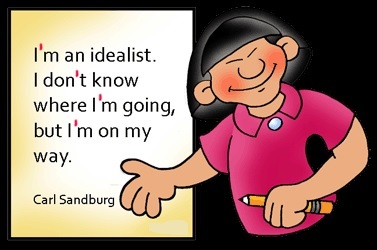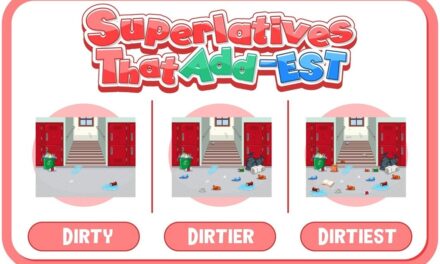Introduction to Apostrophes
The apostrophe is a small but mighty punctuation mark that plays several important roles in English writing. Despite its diminutive size, the apostrophe creates clarity in our writing by showing possession, forming contractions, and occasionally indicating plurality. When used correctly, apostrophes help readers understand precisely what we mean; when used incorrectly, they can lead to confusion or even change the meaning of our sentences entirely.
In this chapter, we’ll explore all the ways apostrophes are used in English, examine common patterns, analyze special cases and exceptions, and provide plenty of practice to help you master this essential punctuation mark.
Part 1: Possessive Apostrophes
The primary function of apostrophes is to show ownership or possession.
1.1 Singular Nouns
For most singular nouns, we form the possessive by adding an apostrophe followed by the letter ‘s’.
Examples:
- The dog’s bone (the bone belonging to the dog)
- The teacher’s desk (the desk belonging to the teacher)
- Sarah’s computer (the computer belonging to Sarah)
- The business’s profit margins (the profit margins of the business)
This rule applies to most singular nouns, even if they already end in ‘s’:
- James’s homework (the homework belonging to James)
- The boss’s office (the office belonging to the boss)
1.2 Plural Nouns
For plural nouns that already end in ‘s’, we form the possessive by adding only an apostrophe after the ‘s’.
Examples:
- The dogs’ bones (the bones belonging to the dogs)
- The teachers’ lounge (the lounge belonging to the teachers)
- The parents’ concerns (the concerns of the parents)
For plural nouns that do not end in ‘s’, we add an apostrophe followed by ‘s’, just as we do with singular nouns:
- The children’s toys (the toys belonging to the children)
- The people’s choice (the choice of the people)
- Women’s rights (the rights of women)
1.3 Proper Nouns Ending in ‘s’
There are two acceptable practices for forming the possessive of proper nouns (names) that end in ‘s’:
-
Add apostrophe + ‘s’ (preferred in many style guides):
- Charles’s invention
- Texas’s economy
-
Add only an apostrophe (acceptable in some style guides, especially for classical/biblical names):
- Charles’ invention
- Jesus’ teachings
Most modern style guides recommend using the first approach (apostrophe + ‘s’), but both forms are considered correct. The important thing is to be consistent throughout your writing.
1.4 Joint and Individual Possession
When showing joint possession (two or more people possessing the same thing), the apostrophe is used only with the last name:
- John and Mary’s house (the house belongs to both John and Mary)
- The president and vice president’s decision (one decision made by both officials)
When showing individual possession (different people possessing different things), each name gets its own apostrophe:
- John’s and Mary’s cars (John has a car and Mary has a separate car)
- The president’s and vice president’s offices (each has their own office)
Part 2: Contractions
Apostrophes are used in contractions to indicate where letters have been omitted when two words are combined.
2.1 Common Contractions with Pronouns
Examples:
- I am → I’m
- You are → You’re
- He is/has → He’s
- She is/has → She’s
- It is/has → It’s
- We are → We’re
- They are → They’re
- Who is/has → Who’s
2.2 Negative Contractions
Examples:
- is not → isn’t
- are not → aren’t
- was not → wasn’t
- were not → weren’t
- do not → don’t
- does not → doesn’t
- did not → didn’t
- have not → haven’t
- has not → hasn’t
- had not → hadn’t
- will not → won’t (note the spelling change)
- would not → wouldn’t
- cannot → can’t
- could not → couldn’t
- should not → shouldn’t
2.3 Contractions with ‘Would’, ‘Will’, ‘Have’, and ‘Had’
Examples:
-
I would/will → I’d/’ll
-
You would/will → You’d/’ll
-
He would/will → He’d/’ll
-
She would/will → She’d/’ll
-
We would/will → We’d/’ll
-
They would/will → They’d/’ll
-
I have/had → I’ve/’d
-
You have/had → You’ve/’d
-
We have/had → We’ve/’d
-
They have/had → They’ve/’d
2.4 Informal and Regional Contractions
Some contractions are more common in informal or regional speech:
- going to → gonna (very informal, generally avoided in formal writing)
- want to → wanna (very informal)
- got to → gotta (very informal)
- kind of → kinda (very informal)
- should have → should’ve (Note: never write “should of”)
- might have → might’ve (Note: never write “might of”)
- y’all → contraction of “you all” (common in Southern American English)
Part 3: Special Cases and Potential Confusion
3.1 Its vs. It’s
This pair causes more confusion than perhaps any other apostrophe issue:
-
It’s = contraction of “it is” or “it has”
- It’s going to rain today. (It is going to rain today.)
- It’s been a long time. (It has been a long time.)
-
Its = possessive form of “it”
- The dog wagged its tail. (The tail belonging to the dog.)
- The company announced its new policy. (The policy belonging to the company.)
Remember: Possessive pronouns (his, hers, its, yours, ours, theirs) never take apostrophes.
3.2 Your vs. You’re
Another common source of confusion:
-
Your = possessive form of “you”
- Is this your book?
- Your opinion matters.
-
You’re = contraction of “you are”
- You’re going to be late.
- I think you’re right.
3.3 They’re vs. Their vs. There
These three homophones are frequently confused:
-
They’re = contraction of “they are”
- They’re coming to dinner tonight.
-
Their = possessive form of “they”
- This is their house.
-
There = adverb indicating place or existence
- Put the book over there.
- There are many reasons to study.
3.4 Whose vs. Who’s
Another tricky pair:
-
Whose = possessive form of “who”
- Whose book is this?
- The author whose book we read is coming to town.
-
Who’s = contraction of “who is” or “who has”
- Who’s going to the party?
- Who’s been eating my porridge?
Part 4: Other Uses of Apostrophes
4.1 Plurals of Letters, Numbers, and Symbols
Apostrophes can be used to form the plurals of letters, numbers, and symbols to avoid confusion:
- Mind your p‘s and q‘s.
- She got all A‘s on her report card.
- The 1990‘s were a time of technological change.
- There are two &‘s in this document.
However, many modern style guides recommend using italics for letters and no apostrophe for decades:
- Mind your ps and qs.
- The 1990s were a time of technological change.
4.2 Omission of Figures in Dates
Apostrophes can indicate omitted numbers in years:
- The class of ’22 (short for “the class of 2022”)
- The ’60s were a time of social change. (short for “the 1960s”)
4.3 Dialect and Quoted Speech
Apostrophes can show omitted letters in dialect or informal speech:
- “‘Twas the night before Christmas” (It was)
- “Come o’er here” (over)
- “Rock ‘n’ roll” (and)
- “How d’you do?” (do you)
Part 5: Common Errors to Avoid
5.1 The Greengrocer’s Apostrophe
This common error involves using an apostrophe to form regular plurals:
-
❌ Apple’s for sale
-
✓ Apples for sale
-
❌ The Smith’s are coming to dinner
-
✓ The Smiths are coming to dinner
Remember: apostrophes are not used to form regular plurals.
5.2 Misplaced Apostrophes in Plural Possessives
-
❌ The dog’s bones (if referring to bones belonging to multiple dogs)
-
✓ The dogs’ bones
-
❌ The children’s toys (incorrect placement—this actually means “belonging to one child”)
-
✓ The children’s toys
5.3 Confusion with Acronyms and Decades
-
❌ DVD’s are outdated. (when referring to multiple DVDs)
-
✓ DVDs are outdated.
-
❌ The 1980’s witnessed technological advancement.
-
✓ The 1980s witnessed technological advancement. (preferred in most modern style guides)

















